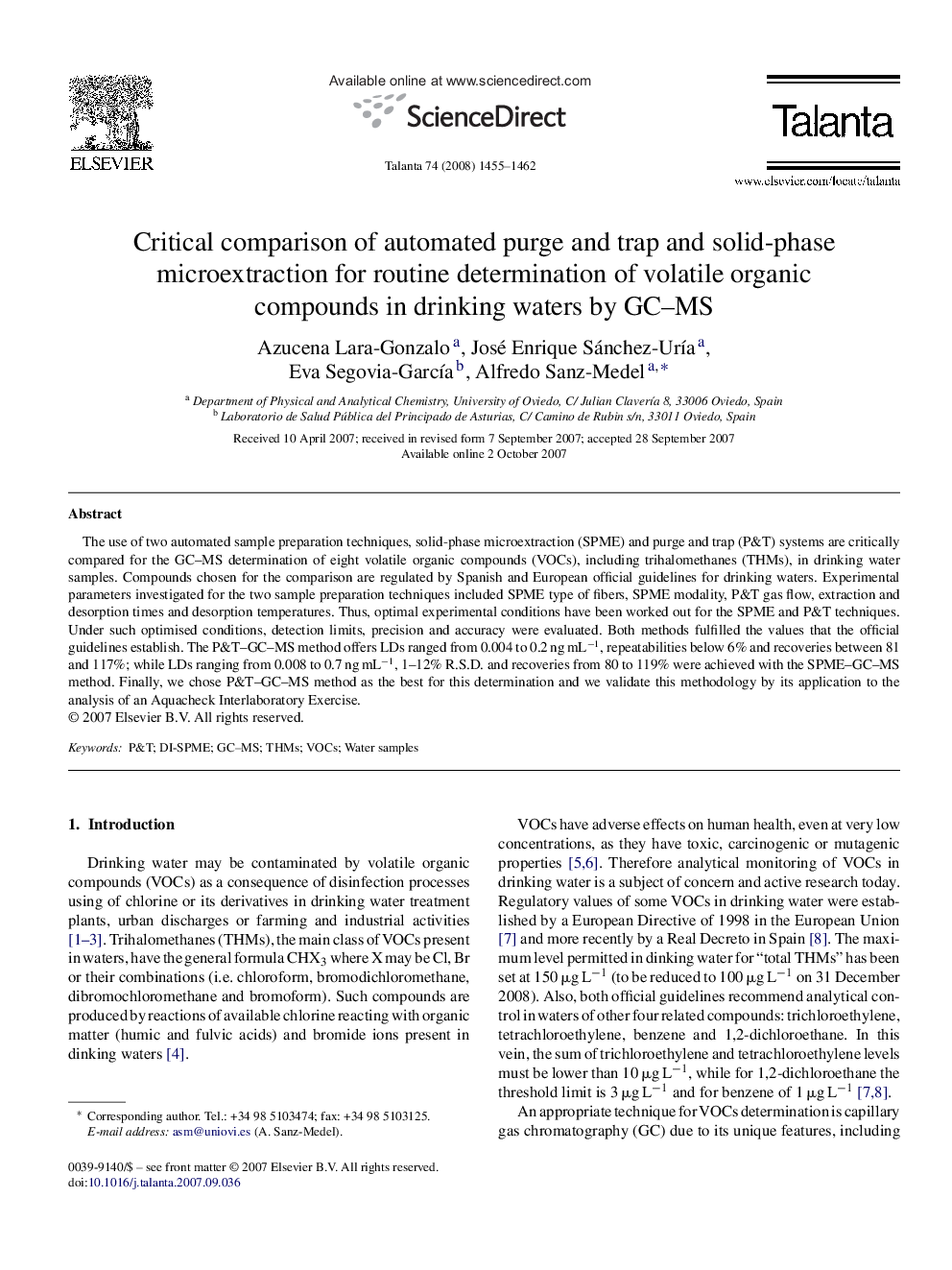| Article ID | Journal | Published Year | Pages | File Type |
|---|---|---|---|---|
| 1244541 | Talanta | 2008 | 8 Pages |
The use of two automated sample preparation techniques, solid-phase microextraction (SPME) and purge and trap (P&T) systems are critically compared for the GC–MS determination of eight volatile organic compounds (VOCs), including trihalomethanes (THMs), in drinking water samples. Compounds chosen for the comparison are regulated by Spanish and European official guidelines for drinking waters. Experimental parameters investigated for the two sample preparation techniques included SPME type of fibers, SPME modality, P&T gas flow, extraction and desorption times and desorption temperatures. Thus, optimal experimental conditions have been worked out for the SPME and P&T techniques. Under such optimised conditions, detection limits, precision and accuracy were evaluated. Both methods fulfilled the values that the official guidelines establish. The P&T–GC–MS method offers LDs ranged from 0.004 to 0.2 ng mL−1, repeatabilities below 6% and recoveries between 81 and 117%; while LDs ranging from 0.008 to 0.7 ng mL−1, 1–12% R.S.D. and recoveries from 80 to 119% were achieved with the SPME–GC–MS method. Finally, we chose P&T–GC–MS method as the best for this determination and we validate this methodology by its application to the analysis of an Aquacheck Interlaboratory Exercise.
